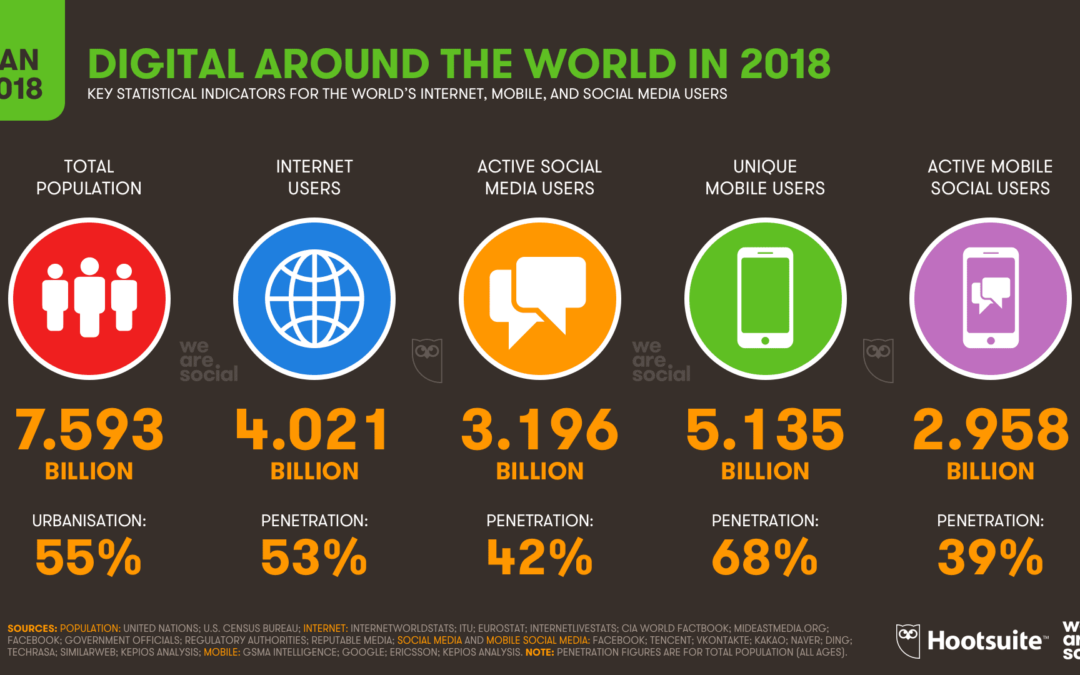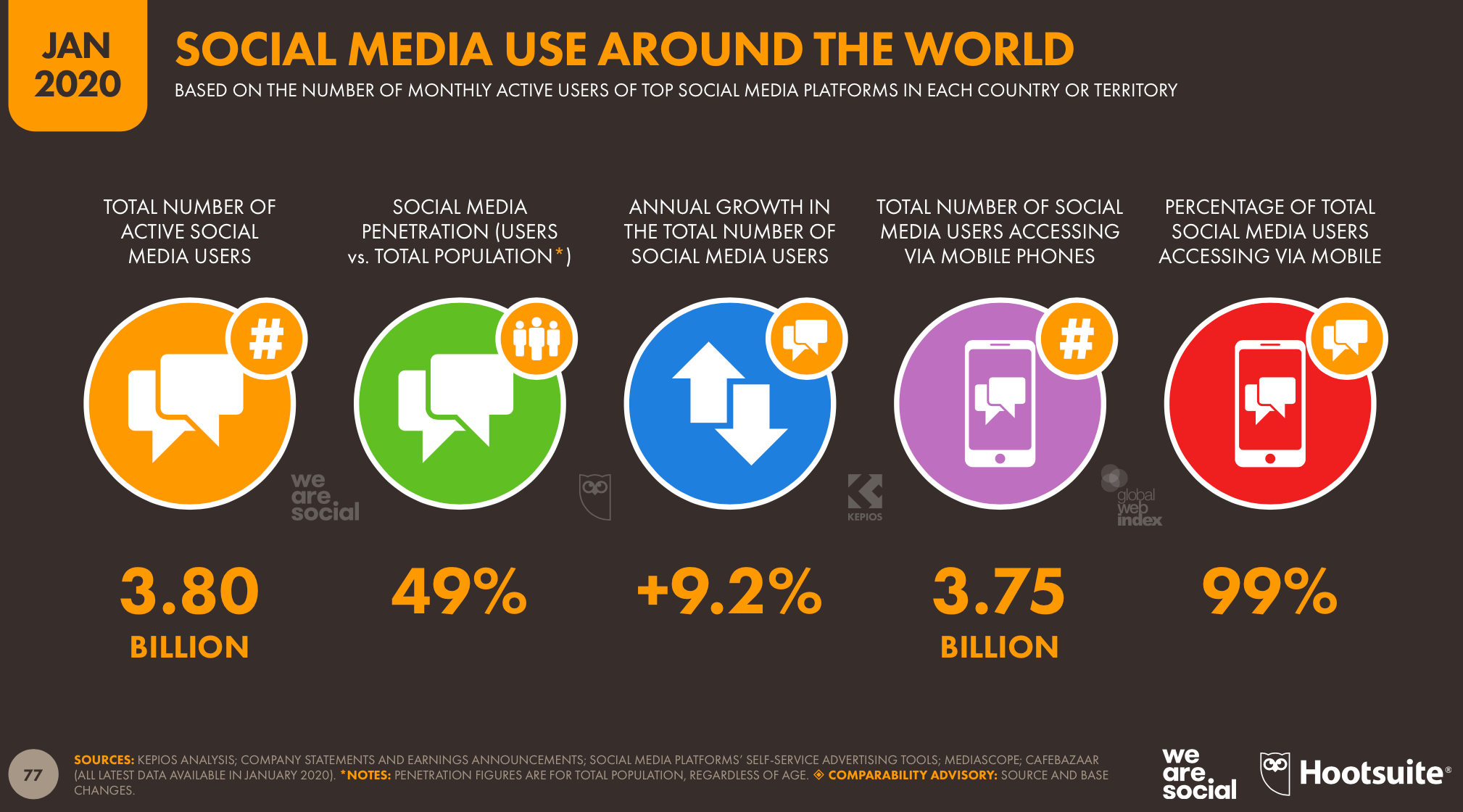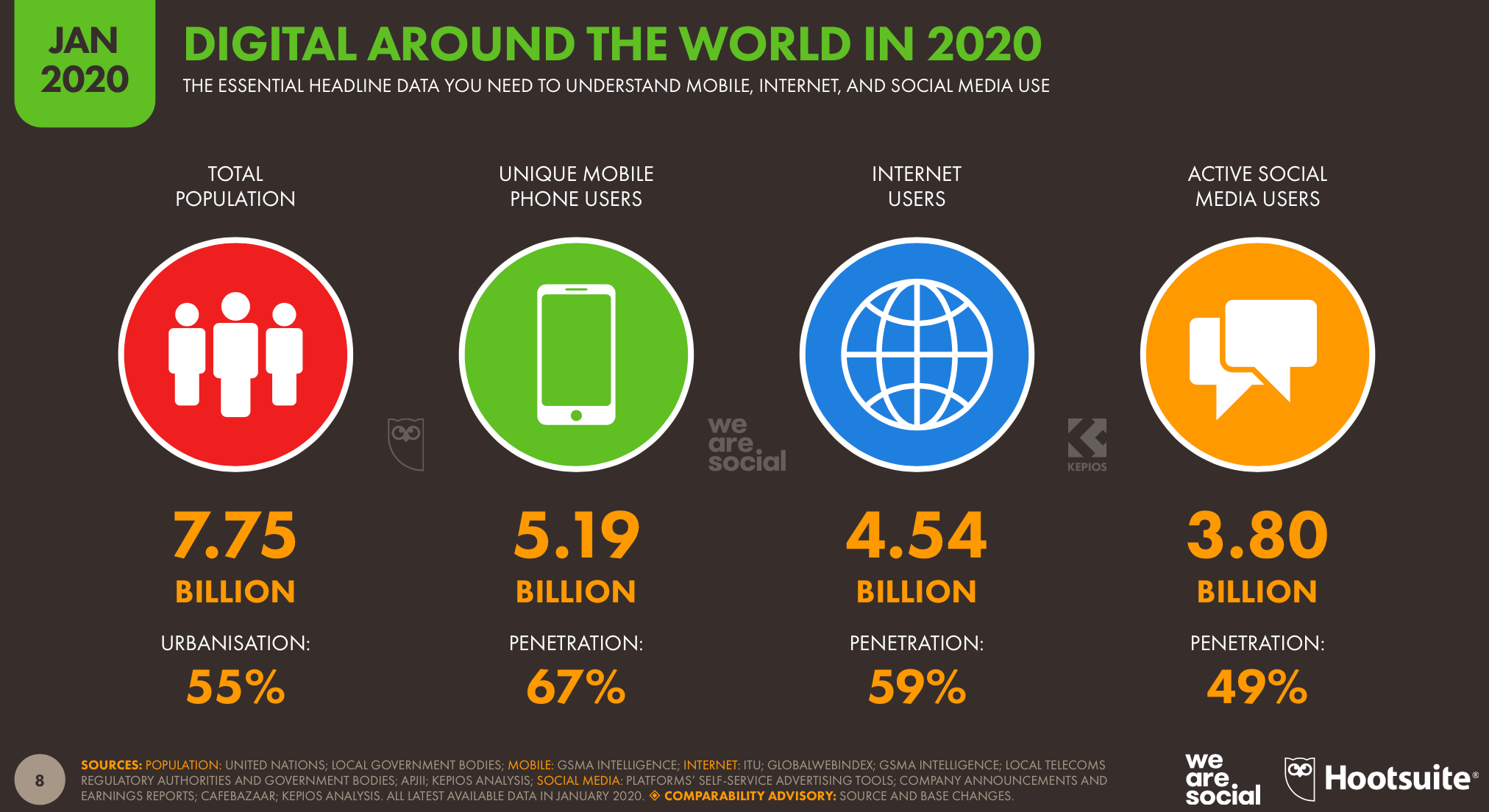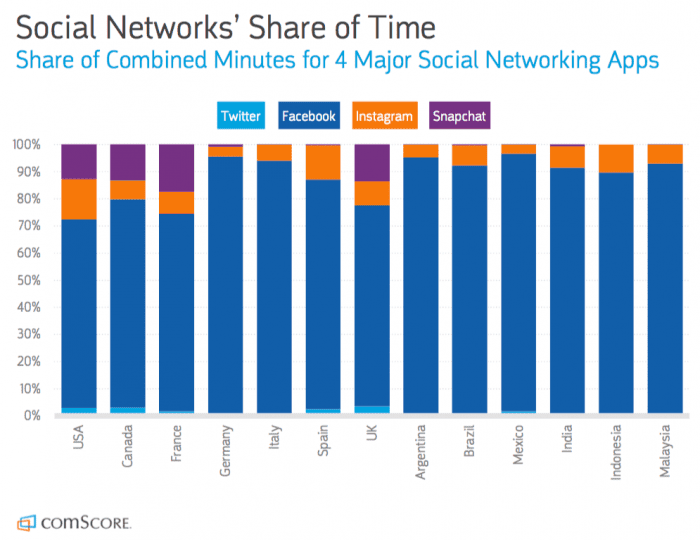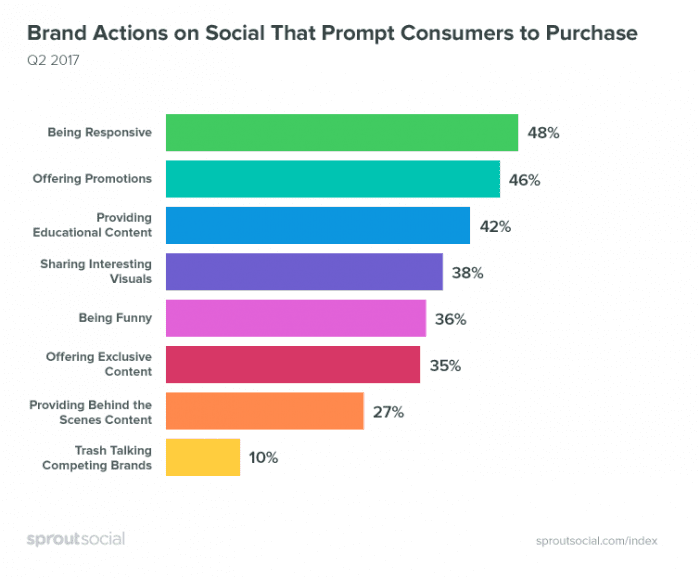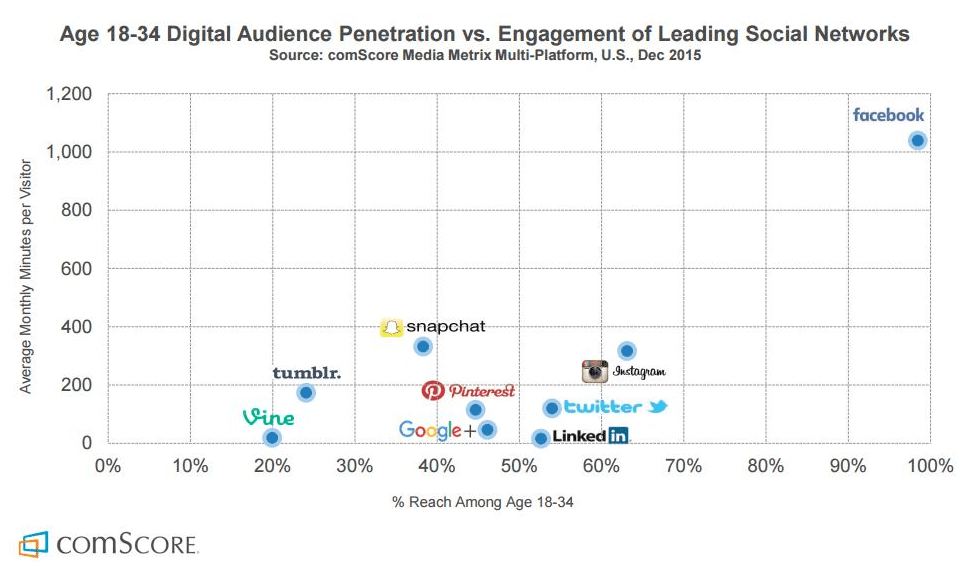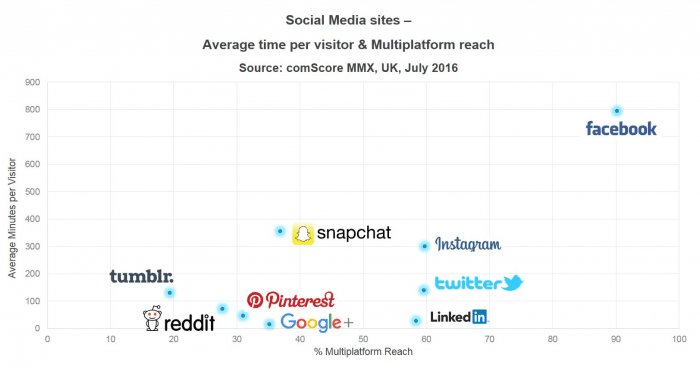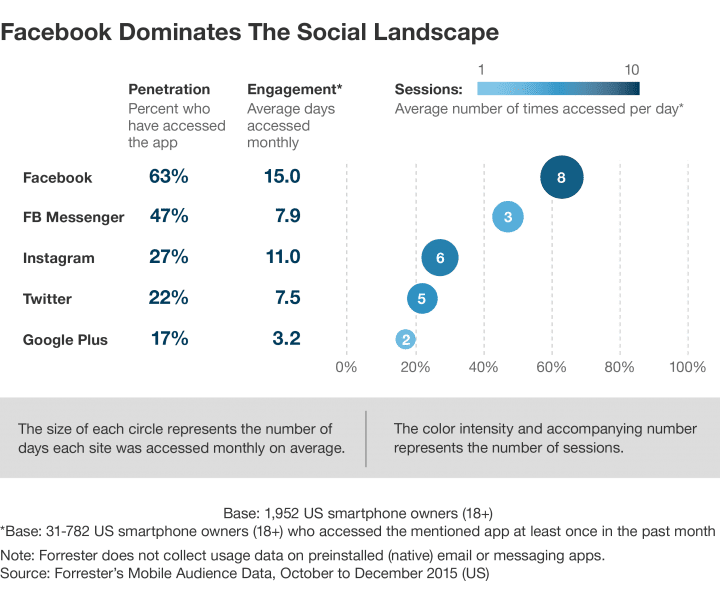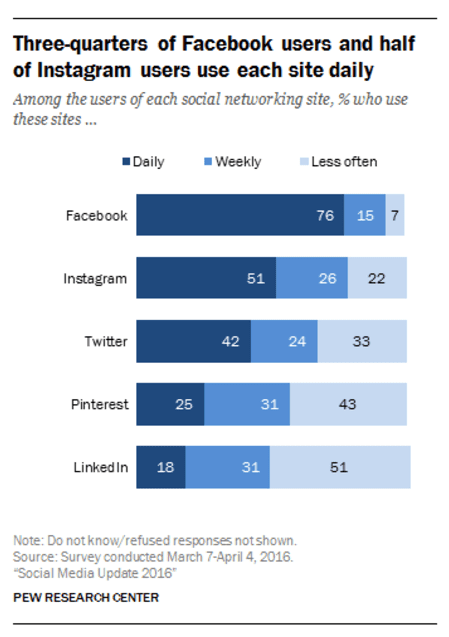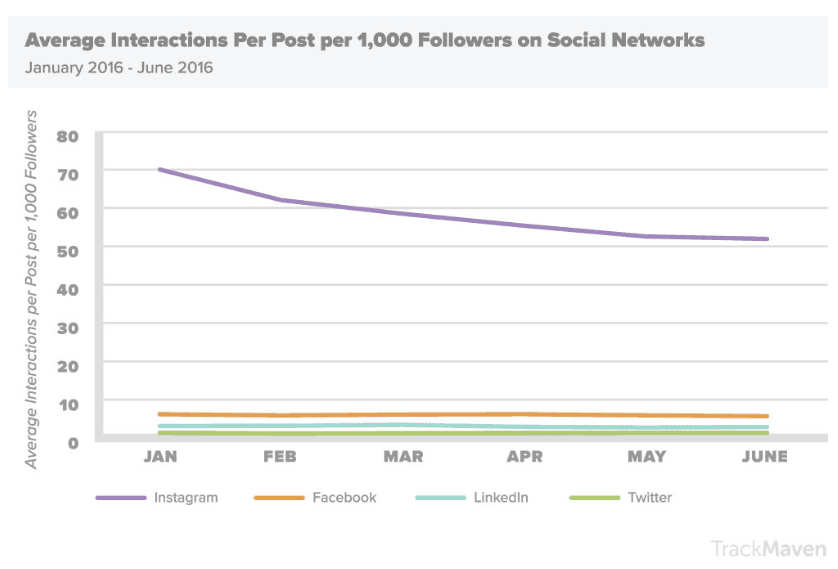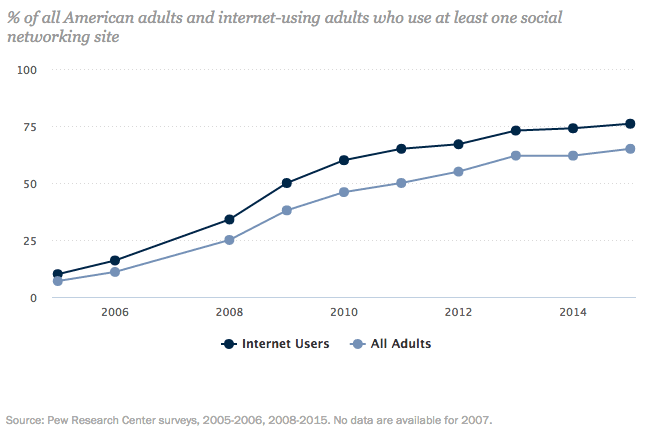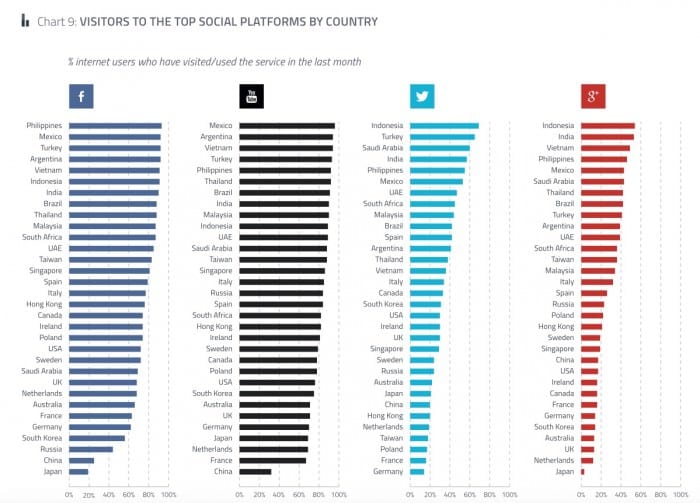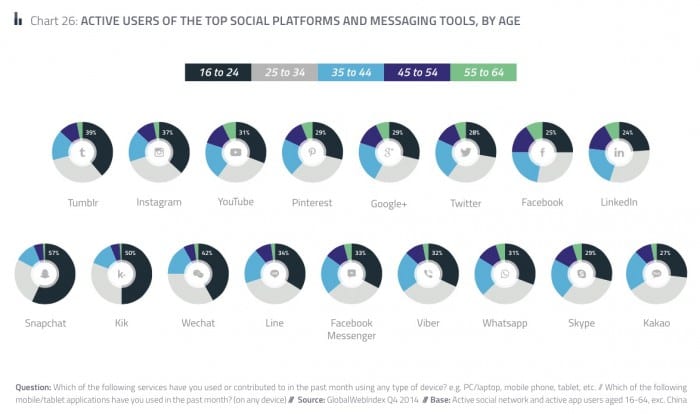Our compilation of the latest social media statistics of consumer adoption and usage
Social networks are now so well established, that there are a core ‘top five’ social networks that don’t change much from year-to-year. But, as we’ll see in this post, the most popular social media sites vary a lot by level of usage in different countries and demographics. Understanding these differences in popularity of different social networks is really important when targeting specific audiences.
When comparing the most popular social networks it’s best to review them by active account usage, not just the number of user accounts. We’ll also see in this summary that some social networks are growing more rapidly than others while some are now in decline.
2020 social media stats update
We’ll keep this post updated during 2020 as the latest statistics are published drawing on our recommended top 10 digital marketing statistics sources. We’ll be pointing to new data around social media channel penetration in the US from Pew Internet and Global Web Index.
Q1. What is the overall popularity of social media compared to overall internet use globally?
Each year, near the start of the year, Datareportal update their massive global compendium of stats which gives some great insights into the world of social media. It’s a great download for presentations. It’s particularly interesting how far some countries are diverging in terms of social media use, and surprising that Western Countries are actually lagging a fair way behind in adoption rates.
Some of the key takeaways from their Digital 2020 Global digital overview published on the 30th January 2020 are:
- More than 4.5 billion people are using the internet at the start of 2020
- Active social media users have passed the 3.8 billion mark with this number increasing by more than 9 percent (321 million new users) since this time last year.
- Nearly 60 percent of the world’s population is already online, and trends suggest that more than half of the world’s total population will use social media by the middle of this year.
The full report from Datareportal contains huge amount of insight collated from different data providers across 200+ slides. It provides country-specific data for the vast majority of the world, so you might want to check out the slides of the countries in your core markets to get a better idea of the current state of social in the areas you operate. In this post, we focus on the social media data which starts at around slide 75 in the report.
This chart summarises the importance and growth of social media. A standout figure relevant to marketers from this chart is the 99 percent of total social media users accessing via mobile at some point.
A summary of global social media users around the world
For comparison, this chart shows the total number of Internet users showing that surprisingly, around 49% of the total Internet users are active social media users. This suggests opportunities for future growth and helps explain why social media users grew by nearly 10 percent between 2019 and 2020.
Analysis of regional use of social media shows the wide variation in active social media penetration reaching 71% in Eastern Asia, 69% in North America, 67% in Southern America and 67% in Northern Europe falling to 59% in Western Europe, 39% in Northern Africa and 6% in Middle Africa.
Q2. Which are the most popular social networks?
The latest insight from the comScore panel in their 2018 Global Digital Future in Focus compares the popularity of social networks by share of time gives this data based on their home panel for the US, Canada, France, Germany, Italy, Spain, UK, Argentina, Brazil, Mexico, India, Indonesia, Malaysia. We have more detailed information on the UK and the US later in this article.
Most popular social networks based on share of minutes
You can see this is a sea of Facebook blue, so this shows that despite the negative media hype about Facebook it is going to remain a major audience channel for some time.
In the UK you can see that Instagram accounts for around 10% of social media minutes, so if you are not already exploiting the latest Instagram ad techniques, then it’s worth looking into these, see our digital media cheatsheet for more details.
This compilation of the most popular social networks worldwide by active users (October 2018) prepared by Statista using data from the Global Web Index panel gives a clear picture of the number of active users (in millions) with Facebook ruling supreme. This won’t be a shock to anyone! With over 2 billion active users it holds the majority market share. Google’s YouTube is second with Facebook-owned, WhatsApp and Messenger not far behind. Facebook’s Instagram platform has fewer than half of the visits of Facebook…
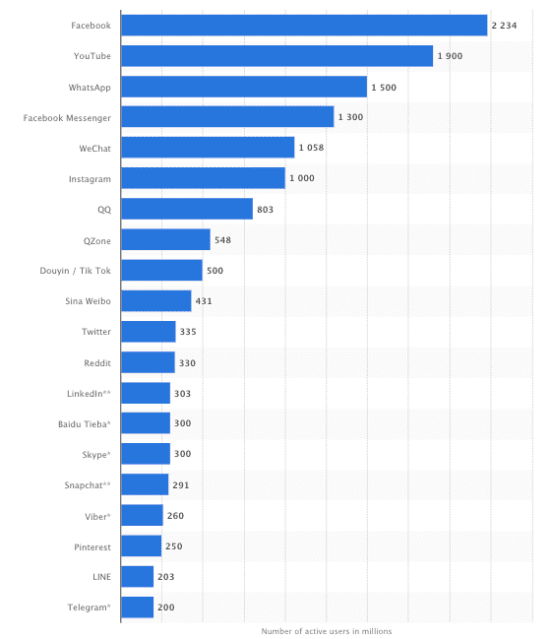
Following from this, we have predominantly APAC favoured platforms, with QQ, WeChat and Qzone all with over 600 million active users, highlighting the array of social platform offerings in the APAC. We then see a cluster of predominantly western social media networks in Tumblr, Instagram, and Twitter.
United Kingdom Social network popularity
The latest OfCom Communications Market report gives this summary for the most popular UK social networks as of March 2018.
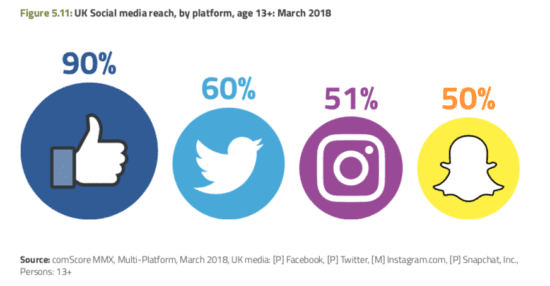
A new 2019 Children and parents: media use and attitudes report also published by OfCom (UK) is interesting if your business is involved in marketing to children or youth markets or you want to understand future adult use of social media. It highlights the continuing decline of Facebook use by younger demographics with 12-15 year olds with a Facebook profile decreasing from 40% in in 2017 to 31% in 2018. Instagram increased from 14% to 23% in the same period with Snapchat fixed at 31%.
Here’s a snapshot of two of the four age groups featured.
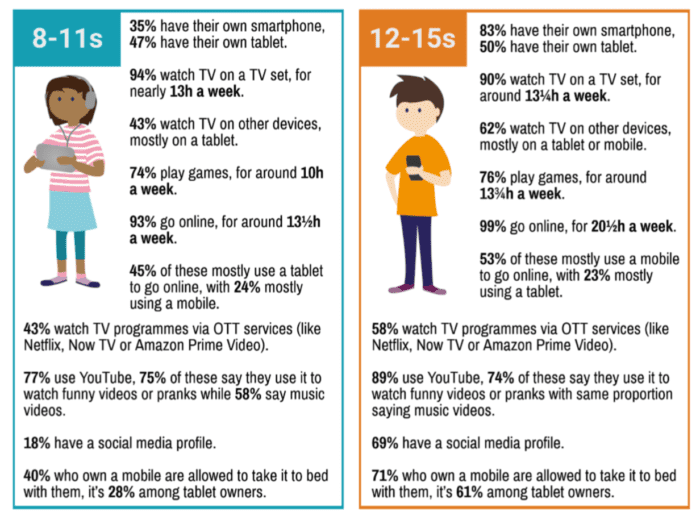
Q3. Which are the fast-growing social networks?
Every marketer has limited time for social media marketing, so which fastest growing social network should you focus your efforts on?
United States Social network popularity
This Pew Research Internet Survey data on gives more detailed insights on US social media usage and growth rates.
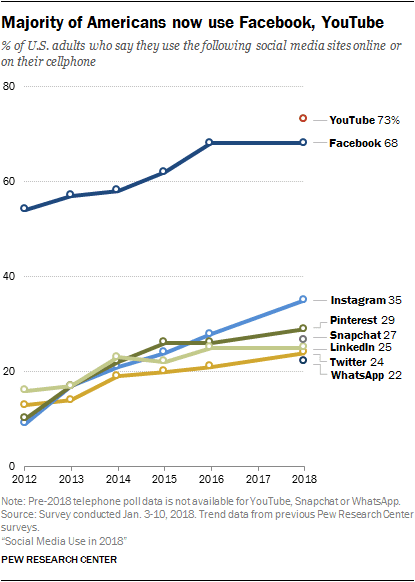
It also reports social media teen use in US from a report Teens, Social Media and Technology 2018.
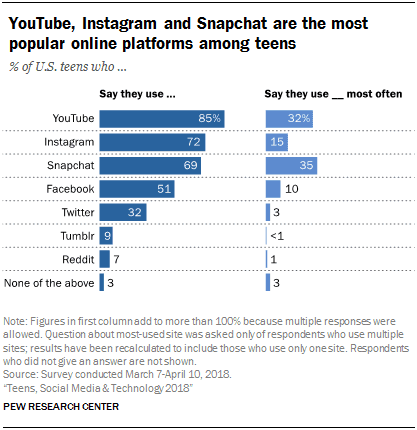
In 2019 Pew has so far reported on perceptions of profiling on Facebook.
This comScore panel data from the Communications market report shows growth ratest based on demographics in the UK for Facebook and Instagram:
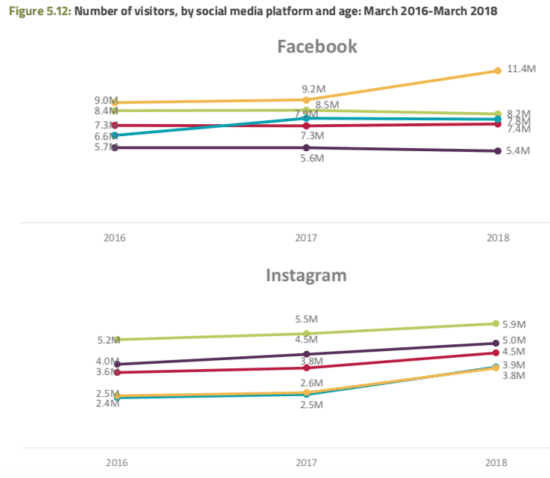
The report also shares data on Snapchat growth:
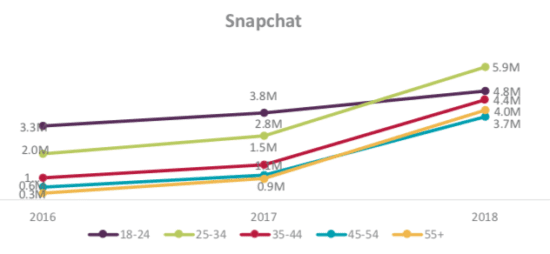 This comparison of changes in monthly active users shows that although Facebook is declining in some demographics such as 18-24 and 25-34, it and Instagram are still growing rapidly overall. Snapchat has also had significant growth.
This comparison of changes in monthly active users shows that although Facebook is declining in some demographics such as 18-24 and 25-34, it and Instagram are still growing rapidly overall. Snapchat has also had significant growth.
Q4. How do social users interact with brands on social?
Knowing how to behaviour / post on social media is also important as this is reflective of your brand personality and consequently influencers social uses to buy or unfollow! Social media is increasingly being used as a customer service platform where customers and potential customers want answers quickly and in real-time. Only 27%of social media user respondents will be prompted to purchase products after seeing behind the scenes content shared on brand social pages.
51% said that they would unfollow brands on social media if they posted irritating posts and 27% said they would mark/report the brand and page as spam and block them. This is why posting relevant, interesting content that resonates with your target audience and social users is important in retaining your Reach and Engagement with potential customers.
Q5. Which is the most engaging social network?
Another factor which determines the time we put into social media marketing is the engagement of the audience. Here we again see the dominance of Facebook – it’s also got the greatest engagement in time according to this insight from the US consumer panel from comScore.
comScore has also published a more recent update on engagement in the UK comparing Facebook vs Twitter vs Instagram vs Pinterest vs Snapchat.
The above chart from Comscore shows engagement in terms of time spent on the platform vs reach among the millennial demographic. It’s interesting to see how effectively Facebook dominates, but also interesting to see how well Snapchat and Instagram are doing in terms monthly usage per visitor. For more Snapchat stats, see our post on Snapchat Marketing Statistics.
Facebook’s dominance is truly extraordinary. Not only does it take the top spot, it’s other platforms also take 2nd and 3rd respectively. Facebook Messenger has an impressive 47 penetration, and Instagram (also owned by Facebook) comes 2nd for engagement.
In this recent chart from Pew Internet below, we can see in terms of active daily use Facebook is also in the lead. 76% of users log in daily, whilst 51% do for Instagram (owned by Facebook). Twitter manages just 42% of users login in daily, only just over half the Facebook figure.
Q6. What are the different interaction rates in social media?
TrackMaven analysed 51 million posts from 40,000 different companies over 130 industries to establish which social networks achieve the greatest engagement per follower. The results show that Instagram absolutely dominates when it comes to interactions per 1,000 followers. In fact, it is so much higher than the other channels we’ve had to include a second chart just to show the difference between Facebook, LinkedIn and Twitter!
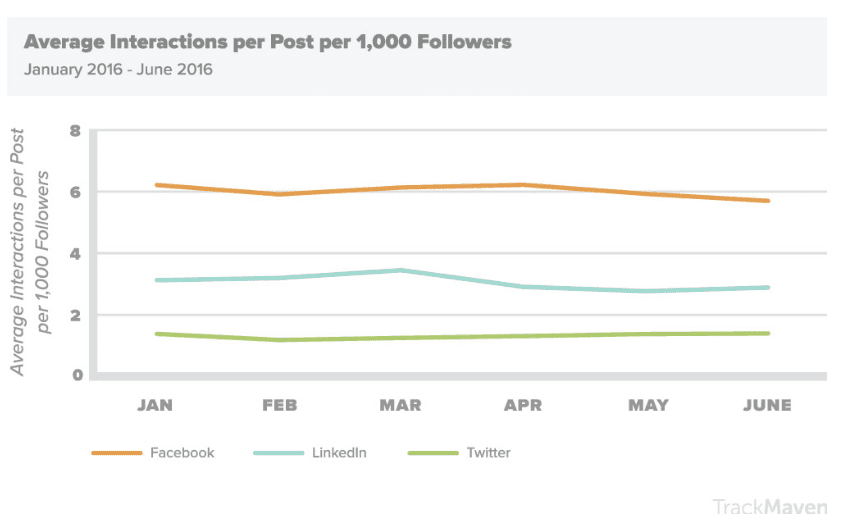
As you can see, Instagram dominates, but when it comes to the other networks Facebook has a considerable lead on Twitter and LinkedIn. This is in large part because people tend to post a lot more on Twitter because it doesn’t have an algorithm that only serves posts to a small section of an audience. This has turned Twitter into a bit of fire hose of content where companies have to share more and more often to be heard through the noise. This has resulted in lower engagement per post.
US Social media adoption
US consumer technology adoption specialists Pew Research Center released a new set of data on US Social Media US on October 8th which shows the latest social media trends and how far it has permeated society. Looking at data from the past 10 years, it charts the meteoric rise of social media.
10 years ago on 7% of the US population used one or more social networking sites. Now that figure has increased almost tenfold, to 65%. Of those who use the internet a massive majority of 76% of American’s use social media.
Social Media has grown massively, but it’s growth is now starting to plateau. Interestingly the over 65s segment are now driving growth, as other age groups have plateaued completely and use is hardly growing it all. Among the 50-64 age cohort, use hasn’t increased since 2013.
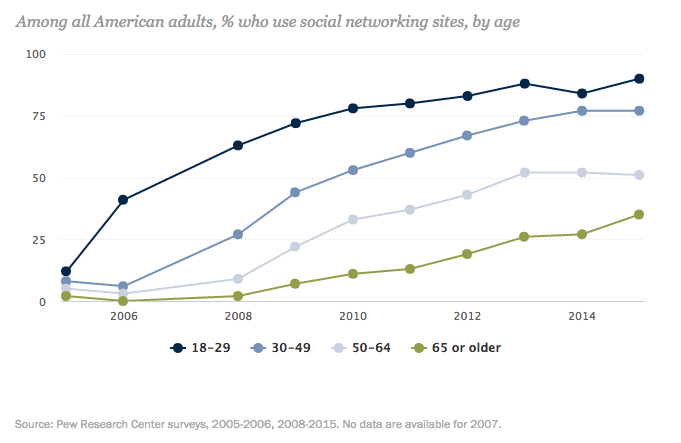
Social network popularity by country
This is a great visualisation of the popularity of social networks based on the interviews in the GWI report. If you pick out your country it’s probably way behind the countries in which these four core social networks are most popular. Indonesia, Philippines, Mexico, India and Brazil are in the top 10 for each with significantly higher levels of use than the US, UK and European countries.
Use of social networks by different demographics
This chart is striking for the similarity of usage across different age groups. It shows that the social networks are now at a stage of maturity where they give opportunities to reach all age and gender groups. The exceptions to this are Instagram and Tumblr which are clearly popular with younger age groups.

